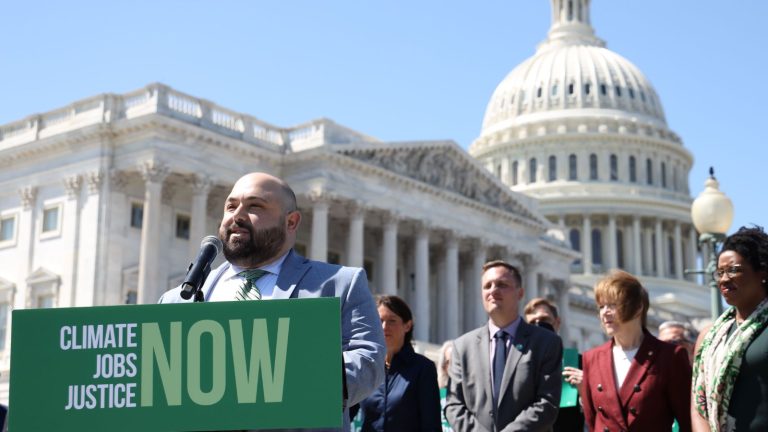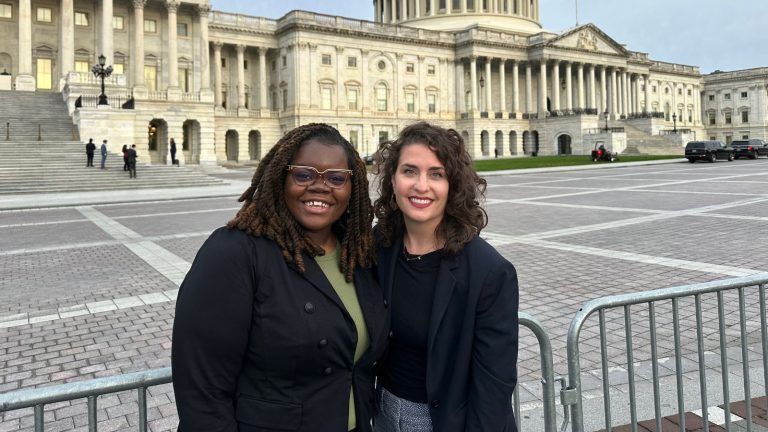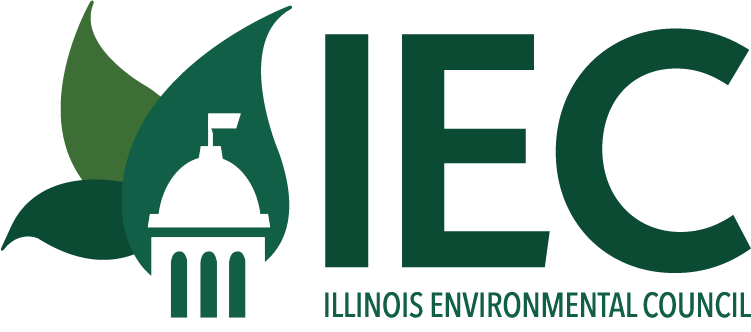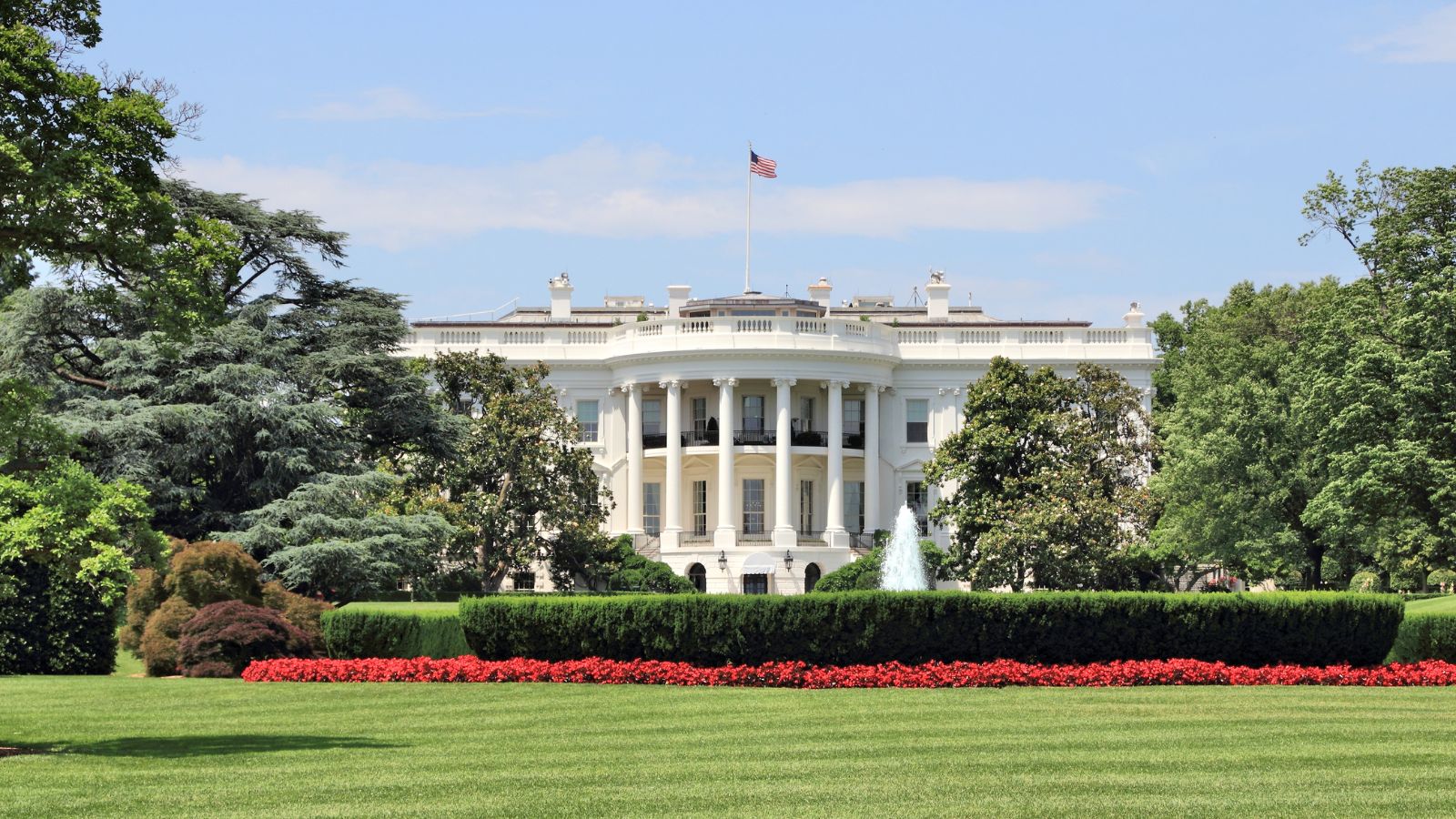Congress introduced and passed, and Trump signed into law, H.R.1, informally known as the “Big Beautiful Bill,” a sweeping federal budget reconciliation package aimed at dismantling landmark provisions of the Inflation Reduction Act (IRA) while expanding fossil fuel development, rolling back environmental protections, restricting safety net programs, and extending high-income tax breaks for the wealthy at the cost of working families. This dangerous bill poses significant threats to clean energy jobs, public health, and the environment. Here in Illinois, where we lead in renewable energy expansion, environmental justice innovation, and regenerative agriculture thanks to previous state-level action, the adoption of H.R.1 demands a recommitment to investments in real, bold climate solutions at the local and state level.
Overview: What is Budget Reconciliation?
Reconciliation is a special process that allows legislation to pass more easily in the U.S. Senate. The main difference between a regular bill and a budget reconciliation bill is that it only needs a simple majority instead of 60 votes to pass. The recent budget bill, H.R.1, was drafted and passed utilizing this process, allowing certain tax, spending, and debt-limit changes to bypass the 60-vote threshold and filibuster.
Across the country, Trump’s new budget will:
- Add $3.4 trillion to the deficit
- Eliminate 760,000 manufacturing and energy jobs
- End food assistance for millions of people in need
- Cut over $500 billion in Medicare funding
- End healthcare for 17 million people
The Trump administration’s H.R.1 bill cuts federal funding for climate, clean energy, agriculture, and transportation initiatives, which will have serious consequences for Illinois’ state budget. As our team reported in our State Legislative Report, although we’re lucky to have years of balanced state budgets under Governor Pritzker’s leadership, Illinois is facing a tough financial outlook, with new revenue projections increasing concern. The new federal budget means that Illinois is now left to either pick up the cost of key federal programs or watch important clean energy, conservation, and rural development efforts stall or disappear altogether.
By prioritizing tax breaks for the wealthy instead of investing in climate solutions and good-paying jobs, the enactment of H.R.1 forces state lawmakers to deal with the fallout. Programs like the Soil and Water Conservation Districts (SWCDs) and the Fall Covers for Spring Savings (FCSS) initiative are already underfunded and will be hit especially hard. Our state lawmakers managed to keep funding for these programs steady this year, but demand is growing, and more cuts would be unsustainable. On top of that, Illinois has already shifted money from environmental and energy efficiency funds into emergency reserves through the Budget Implementation Bill (BIMP), a short-term “fix” that puts long-term progress at risk.
Keep reading to see what is in H.R.1 and how Illinois is affected.
Section 1: Environmental and Energy Rollbacks
Summary of Provisions
H.R.1 drastically cuts key clean energy tax credits, chipping away at Illinois’ progress toward a clean energy economy and threatening to cut as many as 52,000 manufacturing and energy jobs in the state. It eliminates incentives for residential solar, electric vehicles, and home efficiency upgrades, especially harming low-income and rural communities. The bill also slashes over 40% of Environmental Protection Agency (EPA) funding, cutting vital pollution reduction and public health programs. It ends numerous environmental justice and climate resilience initiatives, putting frontline and flood-prone communities at increased risk. These rollbacks threaten Illinois’ climate goals, raise energy costs, and worsen health disparities.
Section-by-Section Bill Breakdown
H.R.1 eliminates or accelerates the phaseout of major clean energy tax credits enacted under the Inflation Reduction Act (IRA), including:
Clean Electricity Production (45Y) and Investment (48E) Tax Credits: These cornerstone IRA credits provided long-term, technology-neutral incentives for clean electricity generation (including wind, solar, geothermal, and advanced nuclear) valid until at least 2032.
Now: H.R.1 shortens eligibility to projects placed in service by the end of 2027, regardless of permitting or interconnection delays.
Residential Clean Energy Credits (25D): These IRA incentives provided a 30% tax credit for homeowners and lessees installing rooftop solar, battery storage, and other renewable systems.
Now: H.R.1 disqualifies third-party-owned systems (solar leasing) and accelerates the credit termination to after December 31, 2025.
Electric Vehicle (EV) and Home Efficiency Credits: Set to expire after September 30, 2025, these incentives currently accelerate Illinois’ transition to EVs and home decarbonization.
Now: Termination slows Illinois’ EV adoption and clean energy home upgrades.
In addition to dismantling critical IRA tax credits, H.R.1 also:
Foreign Entity of Concern (FEOC) Restrictions: These provisions restrict access to clean energy supply chains reliant on solar, battery, and wind components from certain countries, driving up costs and project delays.
Environmental Protection Agency (EPA) Cuts: A 40% cut to EPA funding will eliminate critical programs such as diesel emissions reduction grants, zero-emission vehicle rebates, indoor air quality monitoring in schools, and cumulative impact mapping tools.
Illinois Impact
In Illinois, H.R.1 will:
- Eliminate as many as 52,000 manufacturing and energy jobs and jeopardize new job creation.
- Increase residential energy bills by as much as $400 annually on average and increase commercial and industrial energy bills by as much as 21%.
- Jeopardize Illinois’ Climate and Equitable Jobs Act (CEJA) goal of a 100% clean energy grid by 2050. Wind and solar developments across Central and Southern Illinois, which typically require years for regulatory approvals, now face severe timeline and financing constraints.
- Gut programs like Chicago’s Green Homes Initiative and Illinois Solar for All, which enable renters and low-income families to access rooftop solar. Thanks to Illinois’ leadership, state-level investments in these initiatives remain in place, but the loss of federal funding will nonetheless mean fewer energy savings and increased air pollution.
- Worsen pollution exposure and health disparities, especially in low-income and Black, Brown, and Indigenous communities.
- Increase air pollution in Illinois by 3 million metric tons of carbon dioxide by 2030 and 6 million metric tons by 2035.
- Result in the loss of over $16.8 billion worth of investments from public and private sources due to the repeal of clean energy investments, putting 105 facilities at risk of closure across the state.
Section 2: Environmental and Infrastructure Damage
Section-by-Section Bill Breakdown
Termination of Climate and Environmental Justice Programs: Eliminates dozens of programs that fund air pollution mitigation, clean vehicle deployment, and environmental justice block grants.
Repeal of Neighborhood Access and Equity Grants: Rescinds funds designed to reconnect communities divided by highways and hazardous infrastructure.
Cuts to Clean Water and Climate Resilience Projects: Eliminates funding for surface water storage enhancement and stormwater conveyance, key investments in flood prevention and climate adaptation.
Rescission of Unobligated funds for National Oceanic and Atmospheric Administration (NOAA): Rescinds nearly $200 million in unobligated funds out of $2.8 billion that was previously appropriated to NOAA through the IRA to support emergency preparedness efforts, coastal zone management, and habitat restoration.
Repeal of Federal Emissions Reporting Requirements: Repeals greenhouse gas reporting rules for corporations and eliminates climate data collection and analysis.
Illinois Impact
In Illinois, H.R.1 will:
- Cut funds for environmental justice communities to monitor pollution, clean up toxins, and build climate resilience.
- Jeopardize funding support in flood-prone regions like the Metro East for stormwater infrastructure, putting lives, homes, schools, and small businesses at risk.
- Imperil funds that Chicago-area communities bisected by highways could use to repair infrastructure harms and reconnect neighborhoods.
- Make it harder for Illinois regulators and advocates to hold corporate polluters accountable by weakening emissions and pollution data reporting requirements, weakening transparency and environmental enforcement.
Section 3: Agricultural Programs and Rural Impacts
Summary of Provisions
H.R.1 slashes $120 billion from critical local food and farm programs while protecting subsidies for corporate agribusiness. The bill freezes Supplemental Nutrition Assistance Program (SNAP) benefit levels amid rising food costs, requires punitive work-reporting rules, and shifts administrative costs to states, threatening food security for more than 1.7 million Illinoisans. Meanwhile, this bill preserves $66 billion for traditional farm programs that overwhelmingly favor industrial producers over small or sustainable farmers.
Section-by-Section Bill Breakdown
H.R.1 imposes restrictive changes and funding reductions across food assistance and agricultural programs:
SNAP Work Requirements: Reinstates and tightens work mandates for Able-Bodied Adults Without Dependents (ABAWDs), requiring 80 hours of verified work, training, or community service per month.
Thrifty Food Plan Freeze: Blocks the United States Department of Agriculture’s (USDA) ability to update the Thrifty Food Plan, freezing SNAP benefit levels despite rising inflation and food prices.
Utility and Internet Expense Restrictions: Limits the availability of standard utility allowances in SNAP, decreasing benefit amounts for low-income households with high energy and connectivity costs.
Cuts to Conservation, Forestry, Disaster Assistance, and Crop Insurance: Substantial reductions undermine rural resiliency, support for small and beginning farmers, and response to agricultural disasters.
Changes to Agricultural Subsidies: Caps and eligibility rules favor large-scale producers, marginalizing small family farms and sustainable operations.
Illinois Impact
In Illinois, H.R.1 will:
- Cause thousands of the 1.7 million Illinoisans who rely on SNAP to lose critical food assistance, escalating hunger and health disparities.
- Reduce support for agricultural communities, threatening the viability of small and new farmers, many of whom practice regenerative and sustainable farming, which is crucial to Illinois’s agricultural economy and environmental health.
- Increase financial burdens for families, like higher utility and internet expenses, without corresponding SNAP adjustments.
- Put pressure on Illinois’ state budget, potentially forcing the state to cut essential outreach and nutrition programs.

On the Blog
Learn more about how IEC is cutting through the federal chaos in Defining Illinois’ Federal Strategy for Environmental Advocacy.
Section 4: Tax & Fiscal Impacts
Summary of Provisions
H.R.1 codifies giveaways to the ultra-wealthy and corporations at the expense of hard-working everyday Americans. This bill expands corporate write-offs and adds over $3.4 trillion to the federal deficit, while using budget gimmicks to obscure its true cost and create long-term instability.
Section-by-Section Bill Breakdown
H.R.1 establishes permanent extensions of the 2017 Trump-era tax cuts and adds new fiscal policies that disproportionately benefit wealthy individuals and corporations:
Permanent Extension of Lower Individual Income Tax Rates, Increased Standard Deductions, and Estate Tax Exemptions: These provisions primarily benefit the highest earners, with limited relief for working families.
State and Local Tax (SALT) Deduction Cap Increase to $40,000 Through 2029, after which the cap reverts to $10,000, creating uncertainty for Illinois taxpayers facing high property taxes.
Corporate Bonus Depreciation and Expensing: Permanently extends 100% bonus depreciation, allowing immediate deduction of capital investments, mainly benefiting large corporations in sectors like oil, gas, and logistics.
New 3.5% Remittance Tax on International Money Transfers: This tax disproportionately benefits corporations and individuals sending funds abroad.
Deficit Increase and Federal Grant Risk: The bill is projected to increase the federal deficit by approximately $3.4 trillion over ten years. This heightens the risk of cuts to federal grants supporting Illinois housing, transit, environmental remediation, and social services.
Illinois Impact
In Illinois, H.R.1 will:
- Threaten funding for public education, healthcare, and infrastructure by reducing corporate tax revenue. Small businesses and immigrant-owned enterprises will receive minimal benefits.
- Likely force difficult trade-offs in state budgets due to reduced federal support, further burdening vulnerable communities.
Section 5: Healthcare and Social Services Cuts
Summary of Provisions
These healthcare cuts worsen health disparities, especially in communities across Illinois that are already burdened by environmental pollution, deepening the overlap between poor health and environmental injustice. More than 500,000 Illinoisans will lose health insurance, with close to a $1,000 average increase in premiums for people covered under the Affordable Care Act. Nine rural hospitals in Illinois are at risk of shutting their doors.
Section-by-Section Bill Breakdown
Medicaid Work Requirements and Mandatory Eligibility Redeterminations: Mandates monthly work reporting for certain adult Medicaid recipients and requires states to perform ongoing redeterminations of eligibility. These administrative burdens are known to result in coverage loss, often due to paperwork issues, not actual ineligibility.
Restrictions on Medicaid and SNAP Eligibility for Immigrants: Add new restrictions for legal immigrants seeking SNAP and Medicaid, exacerbating existing eligibility barriers for mixed-status families.
Repeal of Medicaid Staffing and Quality Rules for Long-Term Care Facilities: Halts implementation of nursing home staffing standards, reducing protections for seniors and people with disabilities in long-term care.
Cuts to Medicaid Emergency Coverage & Provider Payments: Slashes enhanced funding for emergency Medicaid and limits provider taxes and state-directed payments, which are both essential tools for safety net hospitals.
Illinois Impact
In Illinois, H.R.1 will:
Put tens of thousands of low-income Illinoisans, particularly in rural counties and Chicago’s South and West Sides, at risk of losing Medicaid coverage due to onerous work reporting and documentation requirements.
Diminish staffing standards and reduce care quality for senior citizens and people with disabilities at long-term care facilities, especially in underfunded facilities across Southern and Central Illinois.
Result in staffing cuts or service reductions due to budget shortfalls at hospitals serving low-income communities, including safety net providers in Cook County and East St. Louis.
Conclusion
H.R.1 is a blatant attack on working families, environmental protections, and our collective future disguised by Republicans as tax reform. This bill strips away hard-won investments in clean energy, slashes food assistance for millions, and overwhelmingly gives the wealthy and corporate polluters permanent tax breaks, all while blowing a hole in the federal budget and hoping states pick up the tab. This is a cruel and dangerous piece of legislation that prioritizes profit over people, climate, and communities.
We are deeply disappointed, but not surprised, that the Trump administration and Illinois’ Congressional Republicans chose to support this regressive budget. Their votes are a direct betrayal of the families, farmers, and frontline communities they represent. At a time when Illinoisans are demanding bold climate action, equitable recovery, and a fairer tax system, our elected leaders chose a short-term political victory over our long-term prosperity. At the same time, we are grateful for our Democratic Congressional Delegation, who used their power to oppose this harmful piece of legislation and listen to their constituents who stand to suffer from the impacts of this bill.
IEC will continue to fight back. We stand with our partners, advocates, organizers, and impacted communities across Illinois who are demanding better. As the federal government does everything it can to reverse the progress our country has made toward clean, affordable energy, leadership from Illinois is important now more than ever. Illinois lawmakers can take state-level action by passing the Clean and Reliable Grid Affordability Act to build on our clean energy goals in the Climate and Equitable Jobs Act, protect consumers and our climate from federal chaos and mismanagement, and keep Illinois moving forward.
To view the full text of H.R.1, click HERE.
To view our press statement, click HERE.

Do you oppose this harmful, federal policy?
Make a donation to IEC! Right now, IEC staff—like Cate and Chelsea—are standing with Illinois families, farmers, and frontline communities to demand bold climate action and a fairer tax system.

